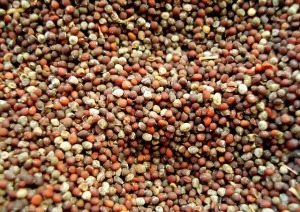by Denise Golinowski
![]() Welcome back to Myth Perceptions where I share some of my wanderings through the world of myth and legend. Last month, I began digging into the myths around vampires with the unintended focus on how keep ’em buried. This month, I’ll explore a little more of the history of vampires and then look at some of the ways folks have tried to contain those pesky critters once they’ve begun to stir.
Welcome back to Myth Perceptions where I share some of my wanderings through the world of myth and legend. Last month, I began digging into the myths around vampires with the unintended focus on how keep ’em buried. This month, I’ll explore a little more of the history of vampires and then look at some of the ways folks have tried to contain those pesky critters once they’ve begun to stir.
Vampires, as we know them in popular culture, are a rather modern development. According to one website the etymology of the term “vampire” traces back to “1734, in a travelogue titled Travels of Three English Gentlemen published in the Harleian Miscellany in 1745.” (Read More: http://vampires.monstrous.com/Etymology_of_vampire.htm#ixzz2tVGNRS9D ) However, the source of the word “vampire” traces back to Turkish “uber” through Hungarian “vampir” to French, but that road is a little muddy. The older words describe creatures who share some of the features of vampires, but lack the obsession with requiring blood to survive. Frankly, many of the older creatures were variations of demons or other mythical entities and usually required the consumption of flesh, not blood, making them more akin to ghouls in this author’s opinion. Further back in time are a plethoria of blood and flesh-eating creatures, but few whose origin is human. I also noted that most of the early vampire stories, the ones closely resembling our modern vampire, derive from folklore in European countries. Myths in non-European countries may include drinking of blood, but not as the sole form of dietary supplement.
So, I’m sticking to my guns and saying that the modern-day vampire is just that, modern, and primarily European.
Now, as to the various ways to keep vampires in the graveyards, out of your house, and off your veins, there are a dazzling array of options. The one that captures my imagination most is that of arithmomania, a compulsion to count. It is said that to distract a vampire from attacking you or to contain them, you should cast a quantity of small objects on the ground in front of them. They are compelled to stop and count every single object before they can pass the obstacle. Rice, pebbles, seeds, anything tiny will occupy the vampire until you can lop off his head or puncture him with a wooden stake. A rather inconvenient weakness and odd, but there it is. So, always carry a bag of rice with you if you’re out vampire hunting.
To protect a village, one of the most unusual things I read involved twins (I guess because two are better than one?). One theory was to have twin males plow a single furrow around the village. Talk about drawing a line in the sand for that blood-sucker. “Yeah, unwelcome undead, step over this line at your peril.” Another mentioned twins born on Saturday as being the best suited to (1) be able to see vampires before they take physical form or (2) serve as vampire hunters for the same reasoning. As if poor Saturday’s Child didn’t have enough to do already. And one source stated that said twins would need to wear their shirts inside out so the vampire couldn’t see them, which reminds me of the protection from fairies – humans who wear their shirts wrong-side out can’t be seen by the Fae. Supernatural creatures just can’t deal with exposed seams.
Moving water is a deterrent to many evil creatures and vampires are not immune. I’ve conjectured that the issue with moving water is that moving water cleanses and we know cleanliness is next to godliness.
The rest of my research recapped all the standard methods for warding off vampires: sacred objects, blessed water, garlic, etc. I love how authors of modern vampire stories play off these tropes. Some embracing them, others tossing them aside. I used to be irked by the daywalking vampire, but my research hinted that the earliest vampires were never adverse to a little walk in the sun, just more suited to the night. So keep that bag of rice with you at all times. However, I think the glitter should be left to the Fae.
Well, I hope you’ve enjoyed my little walk through the origins and tropes of vampires. Please drop in next month to see where my research has taken me. I’m thinking perhaps a little pixy dust has gotten in my eye.
 Denise Golinowski is a reader and writer of fantasy and romance. Her enovella, Collector’s Item, is available from The Wild Rose Press.
Denise Golinowski is a reader and writer of fantasy and romance. Her enovella, Collector’s Item, is available from The Wild Rose Press.
Her first enovella, The Festival of the Flowers: The Courtesan and the Scholar is also available through the Wild Rose Press. You can visit her blog at Golinowski’s Gambol.





I’d never heard most of that– about the twins or the arithmanomania (i like that word!). most interesting!
Hi, Joanna! Thanks for dropping by. I was also surprised by the twin thing. It was regional, so not widely distributed. The arthmomania thing I’d heard and it’s even been addressed relative to a certain counting Count on Sesame Street. A couple of paranormal writers have used it in their vampire books. Jeri Smith Ready mentioned it in her paranormal series about vampire DJ’s – WVMP Radio. Loved this series!
huh – interesting. Not heard / read most…I read somewhere about the counting thing, but don’t remember where.
And not about the moving water w/ vampires. I think I read it in relation to Fae ?
Exposed seams – not sure I deal well with those either. Don’t think I’m particularly Supernatural? Am I?
I’d never heard of most of this either, Denise! Guess I better start packing a bag of rice in my purse!
Luckily for me, I have twin boys handy. Hey, maybe I can rent them out? I love learning more about the fae, and had never heard about moving water being a deterrent to evil. But it feels right, I’ve always been soothed when near running water, either a river or a beach. Now I’m wishing it was summer! Good Blog Denise.